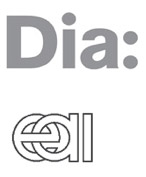Circa 1971: Early Video & Film from the EAI Archive
September 17, 2011–September 4, 2012
Dia:Beacon
3 Beekman Street
Beacon, NY 12508
845 440 0100
www.diaart.org
Circa 1971 includes pieces by Vito Acconci, Eleanor Antin, Ant Farm, John Baldessari, Lynda Benglis, Shirley Clarke, Dan Graham, Nancy Holt and Robert Smithson, Joan Jonas, Gordon Matta-Clark, Nam June Paik, Raindance, Carolee Schneemann, TVTV, Steina and Woody Vasulka, and others. Their pioneering single-channel video and film works will be shown continuously on CRT monitors and as projections at Dia:Beacon where in-depth installations by artists of the same generation, including Bruce Nauman, Richard Serra, Smithson, and Lawrence Weiner, are on view.
The selections for Circa 1971 reflect this first generation’s interest in the engagements with conceptual, political, formal, and cultural implications of video’s immediacy and reproducibility video and moving image media. They also reveal several key themes, including the political and social activism that informed much of the early video subculture; inquiries into the production, reception, and circulation of media images; and explorations of identity, gender, and self. Therein, the works themselves are remarkably eclectic: while many of the pieces engage with the prevailing discourses of contemporary art at the time—including body art, performance, Process art, Minimalism, and Conceptual art—others take the form of “guerrilla television” documentaries or experiments in image processing and the metaphorical potential of the medium.
Setting in dialogue diverse works that are linked by alternative artistic and activist impulses, Circa 1971 exposes the generative encounters among these artists and influences and initiates unexpected correspondences between seemingly disparate works.
By focusing on a specific period in time (1970–72), Circa 1971 presents a snapshot of a cultural moment—or, more accurately, a countercultural moment—and the fertile political and artistic landscape from which these works emerged. EAI was created as an alternative paradigm to support a burgeoning art form that was neither supported by the commercial art market nor the commercial television system. In this respect, its founding parallels Dia’s own. Taken from the Greek prefix meaning “conduit” or “through,” Dia was launched to enable artists to create projects that due to their scale or scope could not be accommodated by traditional galleries or museums.
Circa 1971 offers a framework for reconsidering the multiple histories, artistic practices, and cultural contexts that have informed moving-image art over the past four decades. It reflects Dia’s commitment to presenting innovative special exhibitions at Dia:Beacon, and follows earlier screenings at the museum, including Lives of Performers: Art, Film, Performance around 1970, a series that was organized by Douglas Crimp in 2006.
EAI: Celebrating 40 Years
Founded in 1971, Electronic Arts Intermix (EAI) is one of the world’s leading nonprofit resources for video art. A pioneering advocate for media art and artists, EAI fosters the creation, exhibition, distribution, and preservation of video art and digital art. EAI’s core program is the distribution and preservation of a major collection of over 3,500 new and historical media works by artists. EAI’s activities include viewing access, educational services, extensive online resources, and public programs such as artists’ talks, exhibitions and panels. The Online Catalogue is a comprehensive resource on the artists and works in the EAI collection, and also features extensive materials on exhibiting, collecting and preserving media art: www.eai.org.
Dia Art Foundation
A nonprofit institution founded in 1974, Dia Art Foundation is renowned for initiating, supporting, presenting, and preserving art projects. Dia:Beacon, Riggio Galleries opened in May 2003 as the home for Dia’s distinguished collection of art from the 1960s to the present, and features major installations of works by artists including Joseph Beuys, Louise Bourgeois, John Chamberlain, Walter De Maria, Dan Flavin, Michael Heizer, Donald Judd, On Kawara, Imi Knoebel, Sol LeWitt, Agnes Martin, Bruce Nauman, Gerhard Richter, Robert Ryman, Fred Sandback, Richard Serra, Robert Smithson, and Lawrence Weiner. Alongside the collection, special exhibitions, commissions, and diverse public and education programs take place at Dia:Beacon throughout the year. Dia also maintains long-term, site-specific projects across New York State, in New Mexico, and in Utah, and is developing a new space for programs in Manhattan’s West Chelsea neighborhood. For additional public information, visit www.diaart.org.
Dia on Facebook
EAI on Facebook
Dia on Twitter
EAI on Twitter



